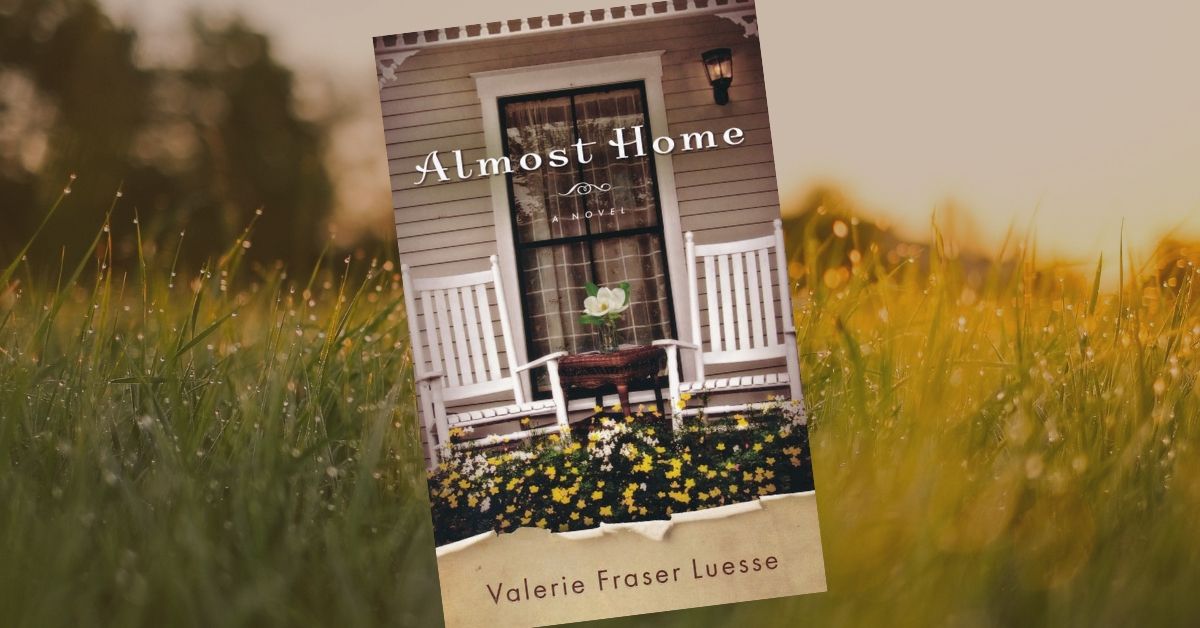
Did you love Valerie Fraser Luesse’s debut novel, Missing Isaac? If so, you’re in for a real treat! The author has now returned with new book, Almost Home. The latest read is also set in the South, this time during the start of World War II.
Readers will transported back in time and experience, through the character’s eyes, what life was like during that tumultuous period. It’s a book that will grip you from start to finish – you’ll surely be left wanting more from this incredibly talented author!
You can order your copy of Almost Home by clicking here!
Q: Your beautiful gift of storytelling was first introduced to readers in your debut novel, Missing Isaac. In Almost Home, you transport readers back to the South in a wonderful tale that is set during the start of World War II. Why did you select this time period?
A: I grew up hearing stories about the Great Depression and World War II because they deeply affected my family – as they affected all families back then. My mother had one brother who was training as a Navy pilot when the war ended and another who saw combat on Okinawa. When he came home, he used his Army pay to install indoor plumbing in his mother’s house, when I spent my childhood.
Both of my parents were children in the 1940s. I’ve heard my dad talk about scavenging for tinfoil because you could get into the movie theaters in Birmingham with a big ball of it, as theaters collected it for the military. I think the war years are fascinating because they were so elemental. There was too much at stake for people to get distracted by things that didn’t matter.
Q: The South was very integral to the war efforts. Can you explain what you have learned about this in your research?
A: Because land was cheap and plentiful here, and there was an eager workforce of people still struggling to pull themselves out of the Depression, the South made a perfect wartime factory for the military. There were shipyards on the coast and munitions plant that later became part of the paper mill where my dad worked in Childersburg, Alabama. With so many people moving to the South to work, there was no place for them to stay, so Southern families rented out rooms in their homes. I had great-aunts and great-uncles who took in boarders during the war. Alabama actually had POW camps housing German prisoners. From what I’ve read, America’s approach was to treat those captives well in the hopes that Germany would reciprocate. Some German POWs reportedly came back to visit Alabama after the war. It was an amazing time that brought together all sorts of people.
One of my Southern Living friends recommended Allen Cronenberg’s Forth to the Mighty Conflict: Alabama and World War II, which was very helpful. And I was completely mesmerized by a fellow Alabamian, the late Eugene B, Sledge, whose book With the Old Breed: At Pelileu and Okinawa should be required reading for anybody who thinks war is grand and glorious.
Q: With so many families moving to the South for jobs, this created a need for housing. In Almost Home, Dolly Chandler turns her own family home into a boardinghouse that attracts an interesting cast of characters. Can you touch upon some of the characters in Almost Home?
A: They’re a colorful bunch! Dolly and her husband, Si, have such a strong and loving relationship that their boarders initially have no idea what struggles and heartbreak they’ve weathered together. Jesse and Anna Williams are a young Illinois couple whose failing farm has driven them south. Jesse’s wounded pride has made him push away the person he loves most, his wife. Joe Dolphus is a sixty-something widower from Mississippi whose kindness and wry wit make him a favorite at Dolly’s. The Clanahans are an obnoxious couple from Reno – they’re trouble. Harry and Evelyn Hastings are out-of-work college professors from Chicago, who take to the South and the people of Dolly’s house.
And then there’s Reed Ingram, a young vet who grew up on the old loop with Dolly and Si and hopes that this place he loves will help heal his war wounds. Finally, Daisy Dupree is a young war widow who boards with Dolly’s neighbor. She is riddled with survivor’s guilt but finds absolution through her friendship with Anna and her relationship with Reed. There’s one more couple – Catherine, the minister’s daughter, and Andre, the river pirate – who were the first owners of Dolly’s house one hundred year’s ago. We meet them and unravel their secrets through journals that Anna and Daisy discover.
Q: Do you have a favorite character that you really resonated with?
A: Definitely Daisy. The book is dedicated to my late friend Melissa Caine. We became what I call sister-friends in college and remained close until she died of cancer when we were both thirty-two. I basically took everything I loved about Missey and poured it into Daisy. Other than her artistic talent, nothing in the book is based on my friend’s actual life because that would have been an invasion of her privacy and her family’s. But the qualities that make Daisy endearing are inspired by Missey, and the friendship between Anna and Daisy mirrors the relationship I enjoyed with my friend.
Q: Almost Home has an unexpected twist. What was the inspiration behind your creative plot?
A: A Grimm fairy tale I read in second grade! It was called The Twelve Dancing Princesses, and I’ve loved the idea of hidden spaces and secret passageways ever since.
Q: Almost Home celebrates sisterhood and women’s ability to connect and cheer each other on through both good and difficult times. Have you learned anything more about community and resilience as you wrote about women during this time period?
A: I think so many good things in life depend upon our willingness to be open – to new experiences, new relationships, new places… When we’re thrown into challenging circumstances and we can’t understand why, sometimes we just have to take a deep breath, keep an open mind, and see where God might be leading us. Also, we can’t let pride and fear get in the way of reaching out when we need help. Just admitting that we’re struggling is so hard sometimes, but nothing brings people closer together than helping each other the way the women of Dolly’s house rally together.
Q: What do you hope readers gain from reading Almost Home?
A: I’ve always loved that Dolly Parton line from Steel Magnolias: “Laughter through tears is my favorite emotion”. I’m with Dolly. I want readers to fall in love with these characters, to hurt for them, laugh with them, take them to heart. I want them to get so caught up in the story that they’ll forget the war’s over. And I want them to see that the hardest person to forgive is always yourself.
Q: What’s next on your writing to-do list?
A: A while ago I started a sequel to Missing Isaac. Have you ever hear the expression “coming up a cloud”? It means a storm is coming. Pete and Dovey will be heading down to the Gulf Coast for a second honeymoon and get caught up in Hurricane Camille, leaving their newlywed parents to search for them in a time and place with no GPS, cell phones, or internet. so, while Missing Isaac brought these couples together, the sequel will explore how they weather storms, literally and figuratively.
I would also like to write a prequel to Almost Home, focusing on the river pirate and his young bride and their life in the Florida Keys.
Then there’s the World War II story on the Outer Banks. And a story set in the Louisiana bayous…
The great thing about working for Southern Living is that the magazine has taken me to so many fascinating places. Now I get to take characters and readers there.
Follow Valarie Fraser Luesse on Facebook




